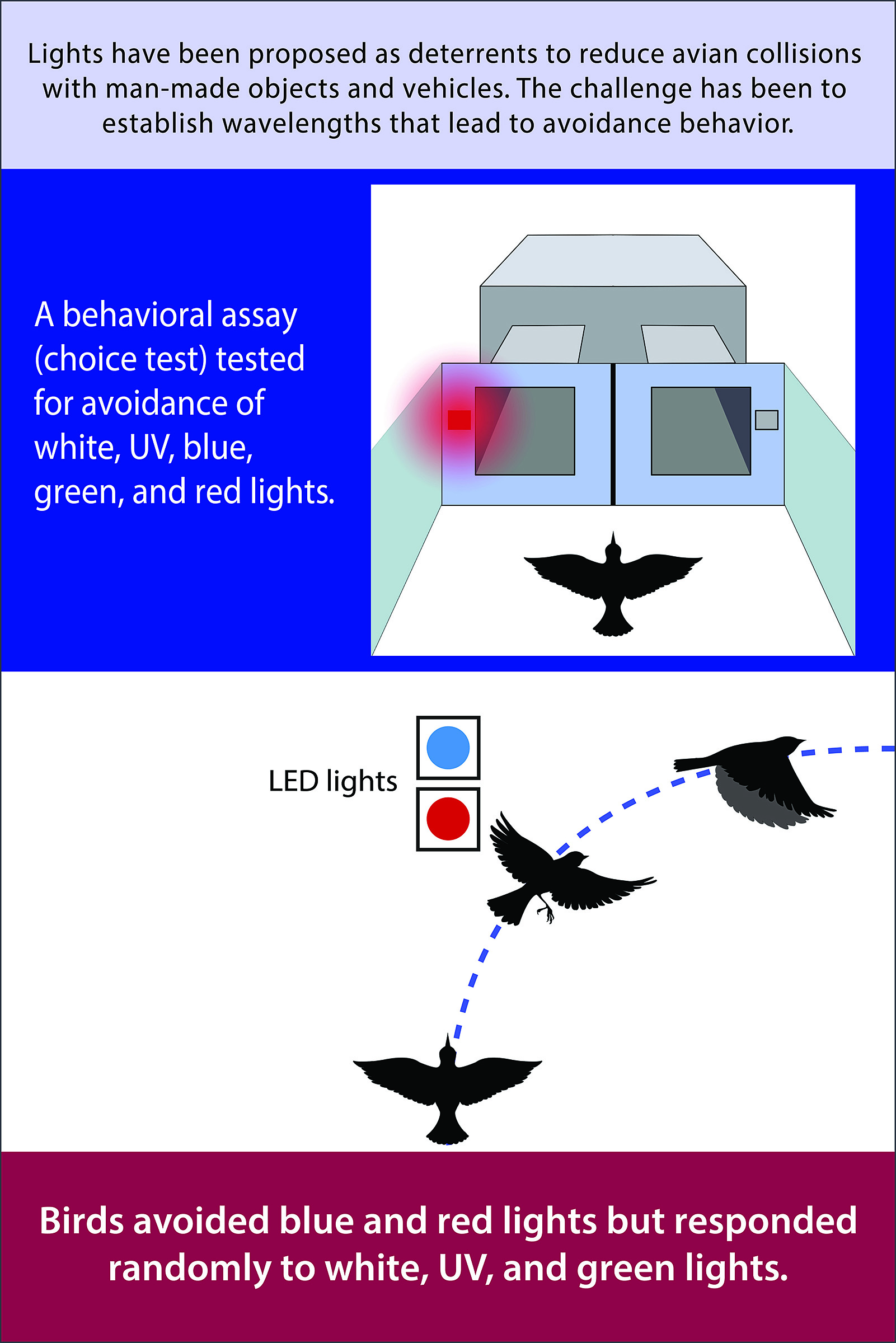People have continued to discover more applications and functions of LED lights. Researchers at Purdue University have found that blue and red LED can be used to prevent birds from colliding with human structures and vehicles.
The Purdue researchers collaborated with the USDA Animal and Plant Health Inspection Service to learn how lights can create “avoidance behavior” in birds as related supporting research was nearly nonexistent. The research team designed a single-choice test for birds, by setting up a divided flight path with light on at one side and light off at and the other. According to Esteban Fernandez-Juricic, a professor of biological sciences at Purdue who led the study, if the bird goes to the side without a light, that light might be a good candidate for warning birds of danger.

(Image: Purdue University)
The test was repeated with lights of five different wavelengths. The test showed that birds consistently avoided red and blue LED lights, whose wavelengths peak at 470 and 630 nanometers. The birds did not show specific pattern of avoidance or attraction when UV, green, and white LED lights were lit up.
Researchers noticed that, in the study, birds avoided the lights which have high levels of chromatic contrast, or differences in color, but lower levels of achromatic contrast, where differences occur only in gray level. By conducting more experiments, the research team hopes to further illustrate how various bird species respond to different type of lights.
“We now have a behavioral assay we can use to test these attraction and avoidance behaviors in a systematic, standardized matter, and we can do it on various species. We’re able to test not just whether a light may be highly visible to a bird or not, but whether that light leads to the behaviors we’re trying to generate,” said Fernandez-Juricic.
The result of the study was published in the journal PeerJ on September 26th. See full paper: https://peerj.com/articles/5404/





 CN
TW
EN
CN
TW
EN






